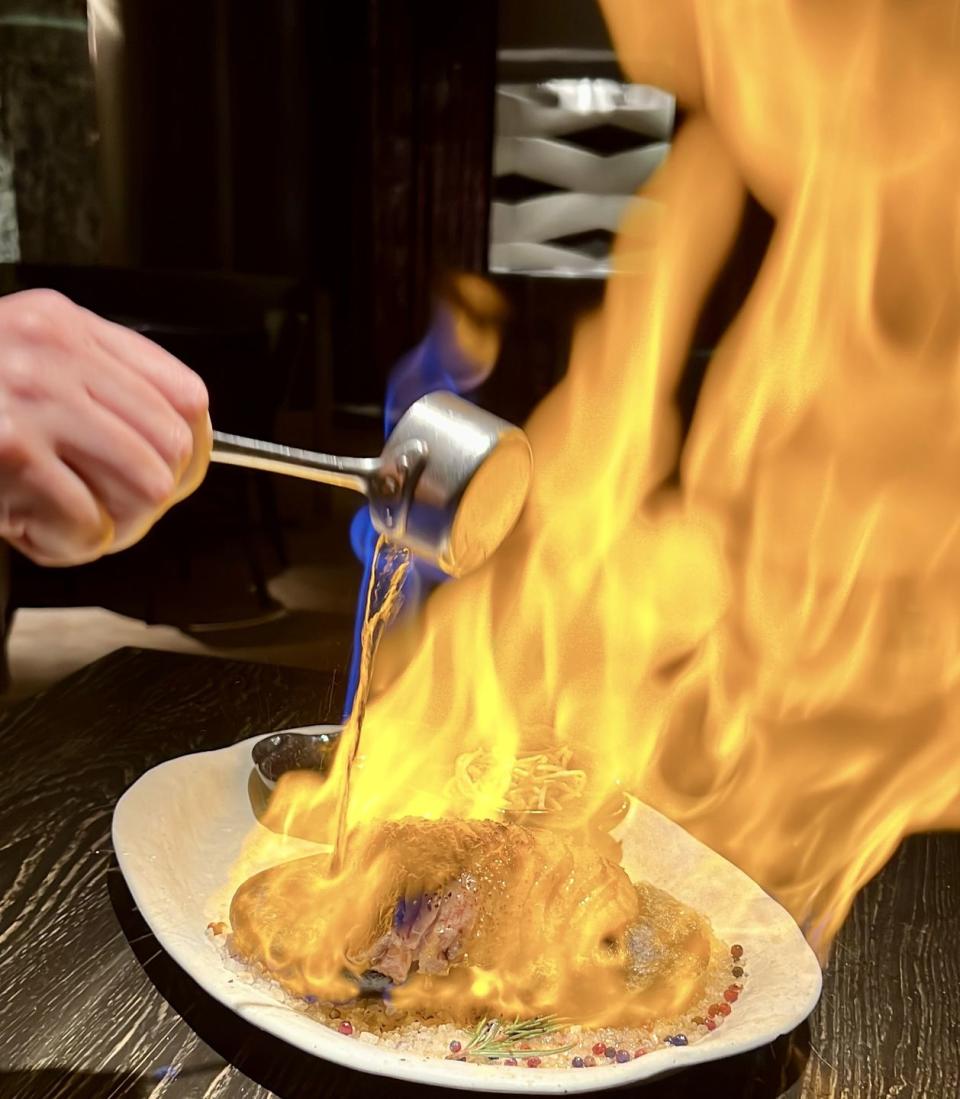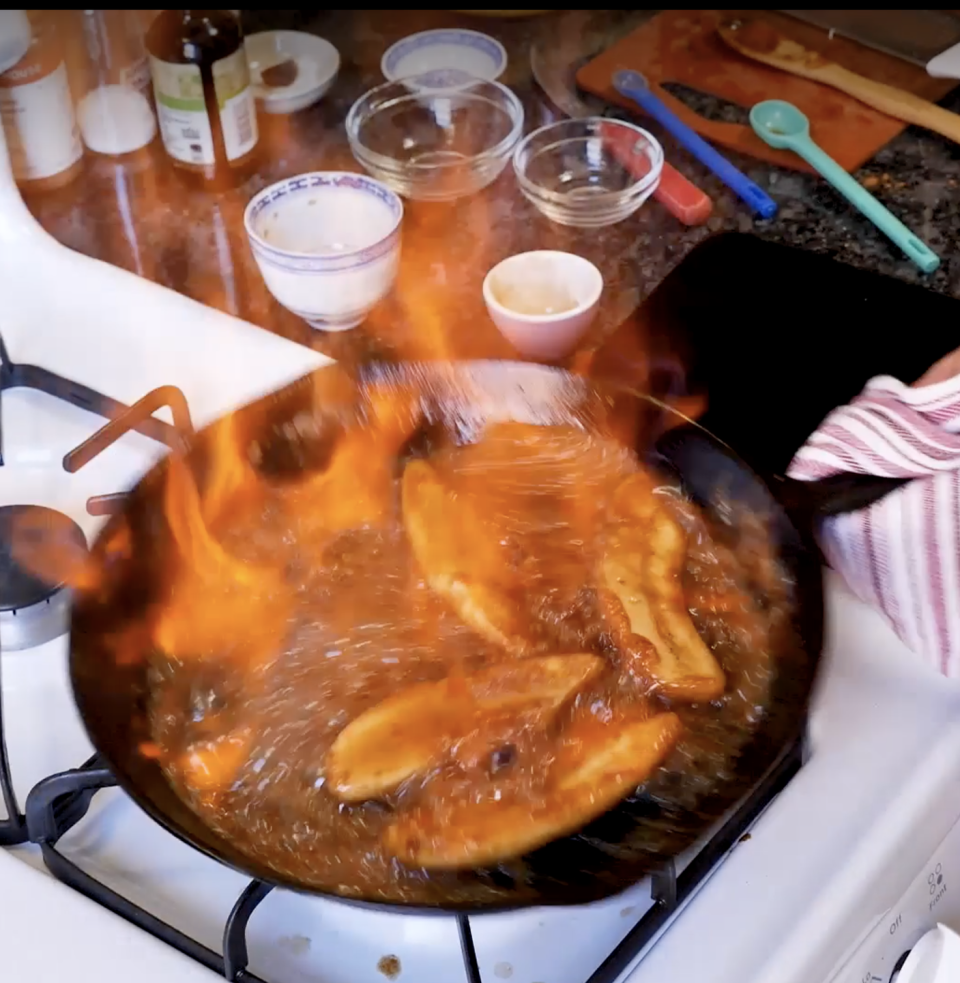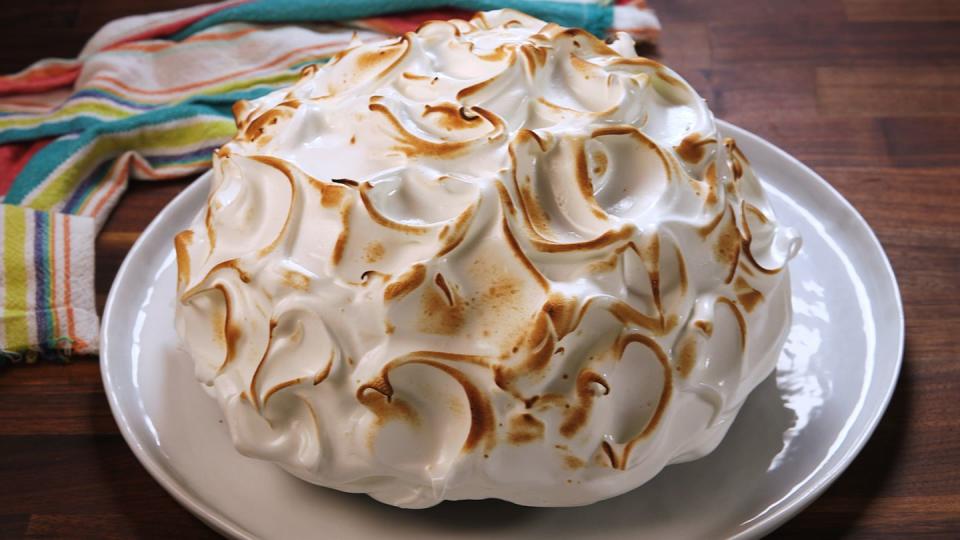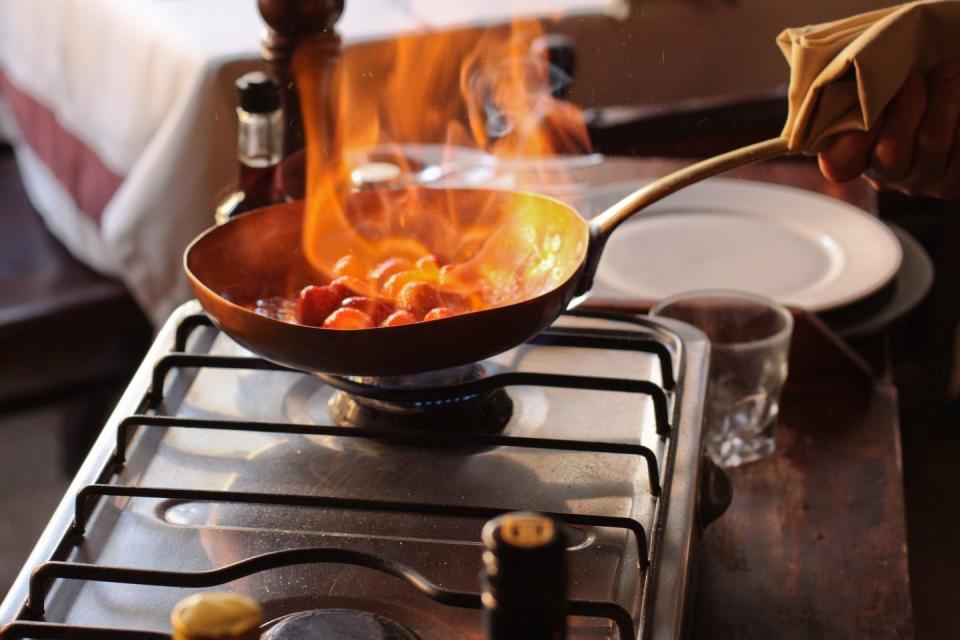How To Flambé Desserts, Cocktails, And More Without Singeing Your Eyebrows
"Hearst Magazines and Yahoo may earn commission or revenue on some items through the links below."
Let's be honest. The only fires you want to be setting in your kitchen are the ones you do on purpose. And that is called flambéing. It may seem totally intimidating to literally light a dish or cocktail on fire, but we're here to teach you the safe way to do it in your kitchen.
What is flambéing?

Let's start with the basics. The word flambé comes from a French word meaning flamed. In the kitchen, it refers to the technique of adding alcohol to a dish and igniting it to burn off the alcohol.
This can be done in desserts, like bananas foster, savory dishes, like steak, and even cocktails. Flambéing is intended to wow guests and add pizazz to a dinner party. The flavors of the liquor remain without the intensity of the alcohol.
Choosing the right spirit
Before you grab your lighter and go all pyromaniac, let's talk about what alcohol you should be lighting up. "Use a higher proof alcohol such as rum, brandy, or cognac," said Adam Raskin, executive chef at The Grid in New York City. "I would choose the flambé spirit like you would any other ingredient you are using with a dessert. Think of the flavors you like with the dessert and spirit together."
This also goes for lighting cocktails on fire. "I always like to start with a liquor that complements the base of the drink," said Julian Cox, executive director of beverage and corporate mixologist for MGM Resorts International. "For the famous Café Brûlot, we use cognac in combination with coffee, orange peel, and clove. It enhances the aromatics of the spices and oils that you light when you brûlée. "
A little lights a lot

When we say a little, we mean it. Start with one to three ounces of your spirit. You'll be surprised at how much it lights up. As you get more comfortable, you can play with fire. But that small amount of liquid will be enough to light up the room.
How to light and pour

"While chefs light [flambéd dishes] using the flame from the stovetop, using a handheld torch is the safest," explained Joshua Coleman, pastry chef at the restaurant Halifax in Hoboken, NJ. "You want the alcohol to burn off, and after the alcohol is burnt off, the flame will cease to exist."
Add the alcohol, turn off the flame, light the liquid with a torch, and wait for it to sizzle out.
For a more tableside approach, Jennifer Chow, executive chef at Nobu Caesars Palace, prefers to heat and light the flambé liquid in a small, copper cup. "It won't stay lit if it's cold," she said, heating the bottom of the cup with a torch. "You can feel it, it vibrates." Then, in a swift movement, she lights the liquid on fire and pours it onto a wagyu steak. You should always pour toward yourself. That way, the flames that dance in the air once the fiery liquid hits the steak won't singeing your arm.
Keep a metal lid nearby. If the flame gets out of control, cut off the oxygen supply to stop the fire.
When lighting a drink on fire, "I like to use a deep glass and have hands that are dried and free of any liquor," Cox said. The alcohol will burn off so, as long as you are alert, the flame will pass. Keep a steady hand."
Why even light food on fire?

Other than the amazing spectacle of it all, it does change the look and flavor of a dish. While the alcohol is burning off, it can add a smokiness and a leave behind the flavor of the liquor. It also adds a caramelized or brûléed look (think Baked Alaska).
You Might Also Like

